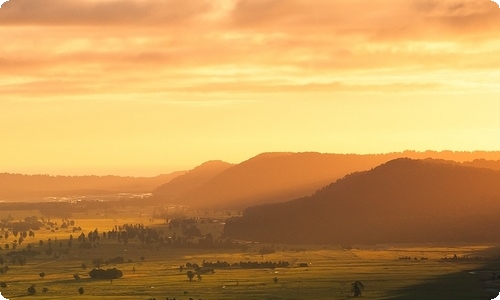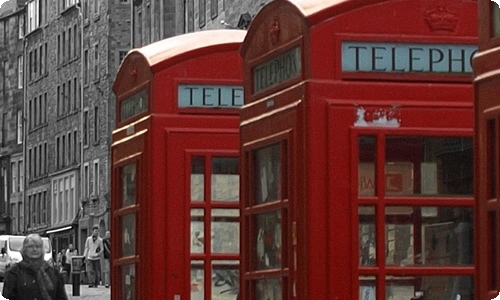英语景点导游词

英语景点导游词
作为一名具备丰富知识的.导游,就难以避免地要准备导游词,导游词可以加深游客对景点的印象,是提升讲解水平的重要工具。我们该怎么去写导游词呢?下面是小编为大家整理的英语景点导游词,仅供参考,希望能够帮助到大家。
英语景点导游词1Ladies and gentlemen, good morning, Today, we are going to visit the Museum of Terracotta Warriors and Horses. This museum is located at the foot of mountain Li Shan, about 35 kilometers east of Xi’an.First, I will give you a brief introduction about the master of this underground army---the First Qin Emperor, Yingzheng. He came to the throne at the age of 13 and seized the power at the age of 22 . By 221BC, he had annexed all the six independent states and established the first centralized autocratic feudal empire in the long history of China.
After the unification of the whole country, he styled himself the First Emperor and standardized the coinage, weights and measures, the legal codes, the written scripts and so on. He also ordered the linkage of the original Great Wall. All these exerted an everlasting influence on the long feudal history of China. But the First Qin Emperor was very ambitious. As soon as he came to the throne, he ordered that a magnificent mausoleum should be built for him. It took 37 years to complete this great project. Actually, the site of those terracotta warriors and horses we now see is just a small part of his mausoleum.
Ok, everyone, now we are standing at the front gate of the Eighth Wonder of the world---the Museum of Terracotta Warriors and Horses. As one of the top ten places of historical interest in China, it was also listed as a world heritage site.So next, let’s go to uncover the veil of this miraculous work.
In March 1974,when several farmers were sinking a well about 1.5km east of the First Qin Emperor’s Maosolem, they came upon many fragments of the terracotta figures.The results of archaeological excavation showed that is two more pits were discovered respectively.They were then named pit1,pit2, and pit3 by the order of discovery.The new discovery stirred up a sensation all over the world.In order to provide the historical artifacts with adequate protection, a musem was set up on the site of Pit 1 in 1975 upon the approval of the state council.
Pit 1,covers an area of 16,300 square meters, is an earth-and-wood structure in the shape of a tunnel. The terra cotta armies in pit 1 were arranged in battle formation. In the front of this formation, there are 210warriors in 3 lines facing forward. Armed with bows and arrows, they constitute the so-called vanguard. Meanwhile, there is one row of warriors on each of the borders of this pit, facing outward---they are the flanks and the rear guard. Holding long-distance shooting weapons, they took up the job of defending the whole army.Then, this way please. We may find ten partition walls which divided this pit into 11 corridors. The warriors standing inside them with horse-drawn chariots represent ……此处隐藏2540个字……rganization at the very end of thetwentieth century.
Through the Qianxi Temple,we step into the Binyang Caves. It consists ofthree large caves, the North, the middle and the South caves. They were allbuilt under the imperial court of the Northern Wei Dynasty. The construction ofthe Mid Binyang Cave was ended in 523 AD with duration of 24 years, over800,000 man-days, that is, nearly 100 people worked on it at the same timeevery day by an average for 24 years. The mainBuddha sitting in the middle isSakyamuni about 8.4 m high with a delicate and preery smiling face, flanked bytwo disciples, two Boddhisattvas on the back wall. Please look around , theside walls were also carved with four layers of relief, like Emperor andEmpress Dowager worshiping the Buddha with their servants. They are allmasterpiece of the Northern Wei sculptures, but unfortunately the later wasstolen in the 1930s and mow is kept in the United States.
After through the LotusCave ,we step in Fengxian Temple,the symbol or the soul of the world-known great Longmen-GROTTOES. It is thelargest Buddhist niche t Longmen. It was built under the imperial deict ofEmperor Gaozong of the Tang Dynasty, with about 20 years of construcrionduration, started in 655 AD and completed in shortening the time of theproject, Empress Dowager Wu Zetian donated 20,000 Strings of Cash Coins for hercosmentics and also attended the consecration of the chief Buddha when the constructionwas thoroughly completed. Please look at here, the chief Buddha sitting straightlyin the center named Losana, the Rewarding Buddha of Buddhism, boasts thebiggest statue at Longmen, attaining a height of 17.14m , with its head 4m,each eat 1.9, flanked by two symmetrical disciples, Boddhisattvas, HeavenlyKings and Great Men of Strength on both sides. So we would rather say that theoverall arrangement of the Fengxian Temple is a scene of agrand imperial court than a spot of Buddhiam. Ladies and Gentleman, now we arein the Prescription Cave, the cave derivedits name just from the 140 prescriptions engraved at the doorway or inside thecave. The construction was started in the Northern Qi Dynasty and completed inthe early Tang Dynasty with an intermittent duration of 200 years. Itsprescription preserved in the cave boast the earliest of all the prescriptioncarvings of ancient times.
Seeing the Guyang Cave,means the approach to the end of the visit to Longmen-grottoes. The creation ofthe Guyang Cave in 493 AD marked the formal startof the Buddhist carving project at Longmen under the royal court of theNorthern Wei Dynasty in large scale. Thus it has a history of over 1,500 years.The three lines of niches with images, fine in ornament and different inpattern, were engraved on both walls, forming an excellent combination of carving,painting, calligraphy, and architecture. What must be particularly pointed outis that the famous inscriptions, the cream if calligraphy, called “The TwentyChoice of Calligraphy at Longmen.

文档为doc格式



